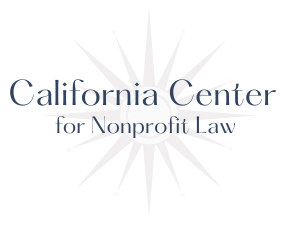
TG 3-32: Foundation Classification – Type II Supporting Organizations – IRC Section 509(a)(3), Publication 6016
Charities generally prefer to be classified as public charities rather than private foundations. Whereas private foundations are subject to many restrictions, including mandatory payouts, limitations on hiring, and extensive annual filing requirements, the restrictions for public charities are much easier to meet.
One way to make a charity eligible for public charity status is by having a supporting organization. Supporting organizations, which may qualify under the IRS definitions of Type I, Type II, or Type III supporting organizations, must have a certain relationship with the supported organization for the Internal Revenue Service (IRS) to designate it as a public charity. More specifically, the relationship between the supporting organization and the supported organization must be sufficient to ensure that it is effectively supervising or paying close attention to the supporting organization’s operations.
The California Center for Nonprofit Law is here to advise you about changes in laws and government policies that affect your public charity. Contact our office to learn more about these and other important issues necessary to keep your organization operating smoothly and complying with all federal, state, and local laws.
Updated Technical Guidance for Type II Supporting Organizations
The Internal Revenue Service (IRS) recently updated its technical guidance for exempt organizations. One of these guidance documents is Publication 6016 or TG 3-32, which addresses the requirements that 501(c)(3) organizations must meet to qualify as Type II supporting organizations under Internal Revenue Code (IRC) Section 509(a)(3).
Defining Type II Supporting Organizations
According to TG 3-32, a Type II supporting organization is supervised or controlled in connection with its supported organization(s). The most important feature of a Type II supporting organization is the common supervision or control between the governing bodies of all organizations involved. Essentially, the relationship between the supported organization(s) and the supporting organization is a sibling relationship.
An organization qualifies as a Type II supporting organization by meeting the following tests:
- Organizational Test
- Operational Test
- Relationship Requirement
- Control Test
The failure of an organization to meet any of the four requirements results in it being disqualified as a Type II supporting organization.
Organizational Test
Under Treas. Reg. 1.509(a)-4(c)(1), a Type II supporting organization’s organizational document must meet the following requirements:
- Limit the purposes of the organization to benefiting, performing the functions of, or carrying out the purposes of one or more specified organization(s) described in Sections 509(a)(1) or (2);
- Not expressly empower the organization to engage in activities, not in furtherance of the authorized purposes;
- Identity the specified publicly supported organization(s) on whose behalf the organization is to be operated; and
- Cannot expressly empower the organization to support or benefit any organization other than the specified publicly supported organization(s).
Furthermore, a Type II supporting organization cannot merely have a qualifying purpose stated in its organizational document. The organization also must set out to fulfill those purposes to meet the organizational test.
Operational Test
Treas. Reg. 1.509(a)-4(e)(1) outlines the organizational test, which provides that a supporting organization must engage solely in activities that support or benefit the specified publicly supported organizations. Examples of qualifying activities include the following:
- Making payments to or for the use of;
- Providing services or facilities for, individual members of the charitable class benefited by the specified publicly supported organization; and
- Engaging in fundraising activities, such as solicitations, fundraising dinners, and unrelated trade or business, to raise funds for its supported organization(s) or the permissible beneficiaries.
Treas. Reg. 1.509(a)-4(e)(2) provides that a supporting organization may also satisfy the operational test by using its income to carry on an independent activity or program. However, the independent activity or program must only support or benefit the specified publicly supported organization(s).
Additionally, a supporting organization may make a payment indirectly through another unrelated organization to a member of a charitable class benefited by its specified publicly supported organization. However, this payment is only permissible if it is a grant to an individual rather than an organization.
Furthermore, a supporting organization may support a different supporting organization that also supports or benefits its specified publicly supported organization(s). A supporting organization may also support state colleges or universities.
Relationship Requirement
The relationship requirement for a Type II organization states that it must be supervised or controlled in connection with the supported organization(s), as per Treas. Reg. 1.509(a)-4(h). The purpose of the relationship requirement is to show that the supporting organization is responsive to the needs or demands of its supported organization(s). This requirement also demonstrates that the supporting organization is an integral part of or maintains significant involvement in the supported organization’s operations.
Control Test
The control test requires that one or more disqualified persons may not directly or indirectly control a supporting organization. For the purposes of the control test, a disqualified person means anyone who is a disqualified person under Section 4946, as follows:
- A substantial contributor to the supporting organization, or a person who has given more than $5,000 to the supporting organization if this amount is also more than 2% of the total amount given by the end of the taxable year;
- A creator of a trust that is a substantial contributor to the supporting organization;
- An owner of more than 20% of the:
- Combined voting power of a corporation;
- Profit interest of a partnership; or
- Beneficial interest of a trust or unincorporated enterprise, which is a substantial contributor to the supporting organization;
- A family member of one of the above persons;
- A corporation, partnership, or trust in which one of the above persons owns more than 35% of the combined voting power, profit interest, or beneficial interest.
The only exception is for Section 509(a)(1) or 509(a)(2) organizations or a foundation manager of the supporting organization who is not a disqualified person for another reason.
Furthermore, under Treas. Reg. 1.509(a)-4(j)(1), if someone who is a disqualified person to a supporting organization is appointed to the role of foundation manager, they still constitute a disqualified person/
Contact Us Today for Legal Advice and Assistance
The California Center for Nonprofit Law concentrates its practice on legal matters that affect churches, charities, and other nonprofit organizations in California. Our unique focus allows us to keep ahead of constant local, state, and federal laws and policies as they develop over time. We are here to represent the interests of your nonprofit organization throughout every stage of your legal matter. Call us at (949) 892-1221, email us at info@NPOlawyers.com, or fill out our contact form online and schedule a consultation about your nonprofit organization today.
